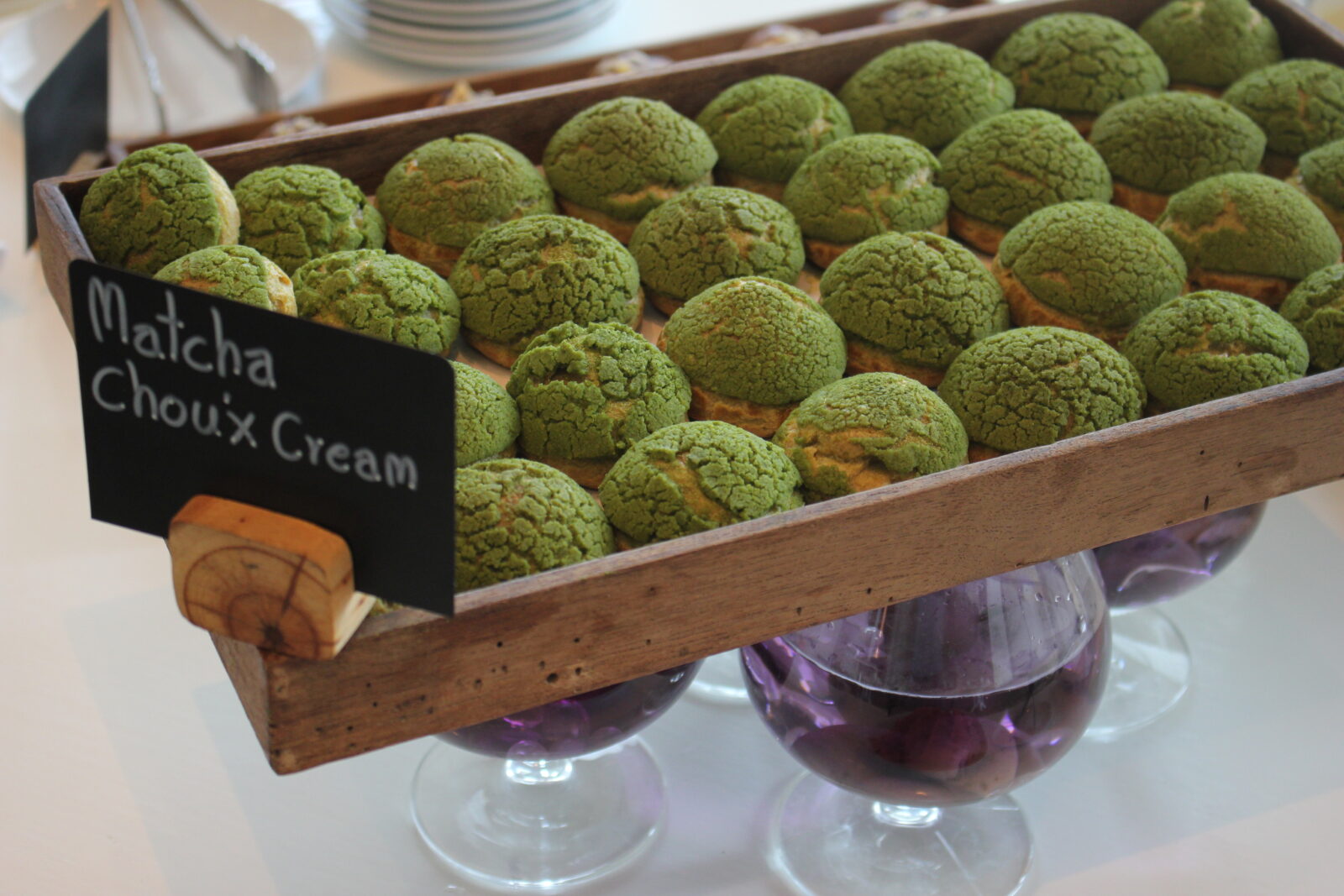Cooking With Tea: How To Pull Off a Divine Three-Course Meal
Most people have heard that tea often gets incorporated into cooking, and many have probably tried a few dishes over the years. Treats like Earl Grey shortbread are common. Nevertheless, we think cooking with tea doesn’t get enough attention. And we are keen to elevate the practice in home kitchens!
One distinct advantage of inviting tea into a culinary repertoire is the enormous flavor diversity it brings to food. A tea like Lapsang souchong turns dishes smoky. Sencha adds pleasing, grassy notes. Herbal teas such as hibiscus, mint, lemongrass, holy basil and lavender touch on flavors that figure into myriad cuisines: Mexican, Vietnamese, Indian, Italian, French and many more. Chai delivers baking spices and botanical heat to everything from muffins to pudding. And glorious matcha, the vivid green powdered tea from Japan, figures into an extensive range of recipes.
Now that temperatures are dipping and we pivot with more vigor back to stoves and ovens, we look forward to experimenting with the many places where tea and the culinary arts intersect. One challenge we appreciate: creating a three-course dinner menu that showcases tea with every dish.
Perhaps you devoted those dreadful Covid-19 months to sourdough bread. Over the years, you also have worked to master barbecue techniques, kombucha fermenting, ravioli crafting and turning so much sugar, egg whites, almond flour and flavoring into French macarons.
Now it’s time for a new culinary endeavor—understanding how to leverage tea for the sake of deliciousness on plates and in bowls, rather than just for cups.
Bon appetit!
The Dinner Party Menu
- Appetizer: Cold tea udon noodles
- Entree: Lapsang souchong marinated salmon
- Dessert: Matcha custard
- Dinner beverage: Cold-brewed Tie Guan Yin, and wine
- Digestion booster: Rose puerh latte
Cooking with Tea: Cold udon noodles appetizer (two servings) with Genmaicha
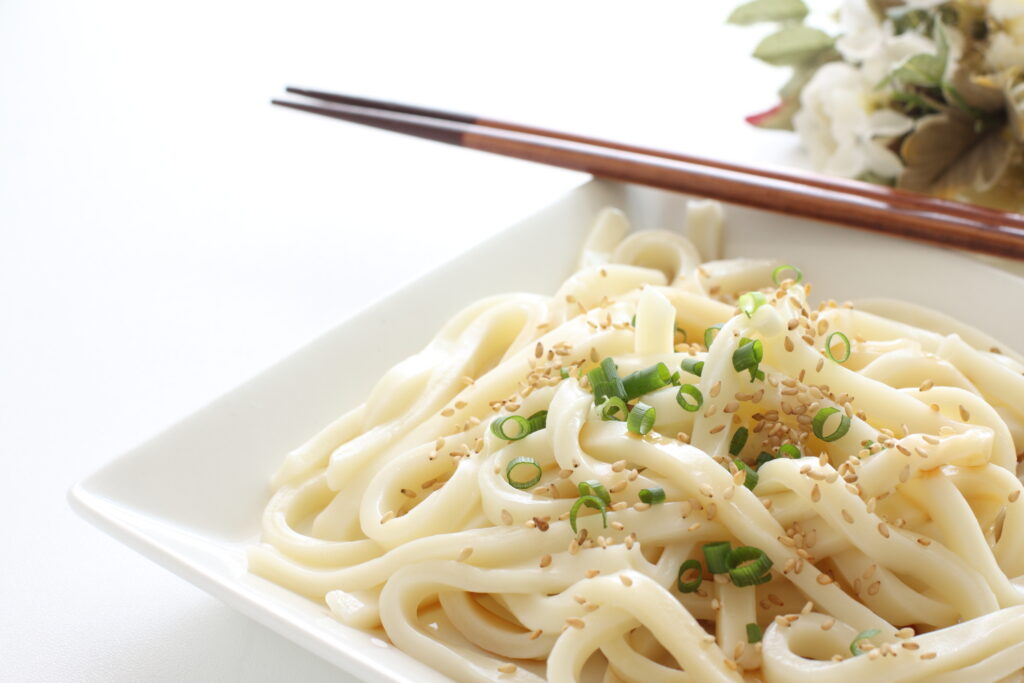
Just as Italians often begin a meal with noodles, a course they call “primo,” so do people across Asia, depending on the feast. We love keeping it simple for a noodle first course; save the pyrotechnics for a noodle main course like ramen, pho or myriad stir fries. The Japanese are enthusiastic about simple noodle dishes like this one, in which noodles get cooked in green tea and adorned with scallions, soy sauce and sesame oil. Additional toppings could include tofu, enoki mushrooms and the Japanese spice blend shichimi togarashi.
To make it, steep two teaspoons of green tea leaves, preferably genmaicha, in one quart of water for three minutes. Using a slotted spoon to remove the leaves from the hot pot of tea.
Bring the tea to a boil, and cook 8 ounces of dried udon noodles for about 5 minutes, until they are supple but also somewhat firm. Remove from heat, and let noodles cool completely in the tea. Once cool, strain the tea-steeped noodles, place them in a covered bowl, and refrigerate for at least an hour, or overnight.
Divide noodles between two bowls, splash a little soy sauce and sesame on each bowl, sprinkle with sliced scallions and any other adornments and serve.
Cooking with Tea: Lapsang souchong marinated salmon
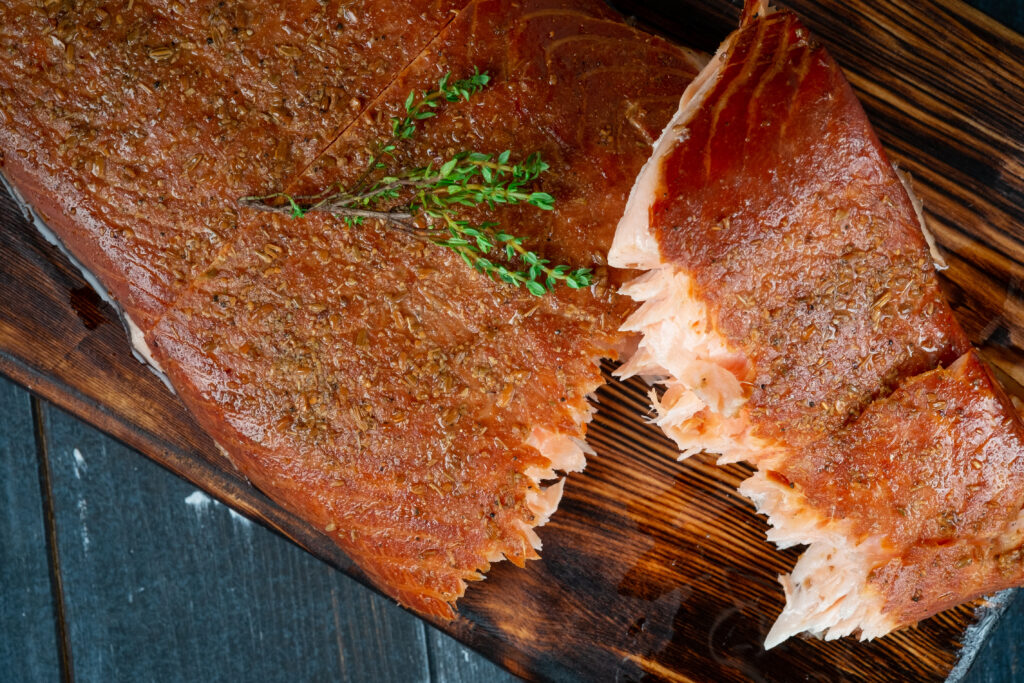
Indigenous people in the Pacific Northwest have smoked salmon for many generations. The fish, which thrived in abundance along the coast and within regional rivers, long served as a cultural foundation—it still does. Today, smoked salmon is commonplace in many cultures. What do many of us pile upon cream cheese-slathered bagels? Smoked salmon.
This recipe infuses salmon with smoky flavors, but without needing to create a fire. Instead, it turns to Lapsang souchong, a historic tea from China’s Fujian Province. There, tea artisans for centuries have smoked black tea over pine wood to yield a robust tea packed with flavor. It’s outstanding on its own as a brewed beverage. But due to the tea’s profound smoke profile, it also complement many foods that marry well with smoke, such as pork ribs, beef brisket and salmon.
To make this superb dish, first steep three tablespoons of loose tea in 1 1/4 cups of boiling water for three minutes. Strain the leaves from the tea.
Combine the tea with 1 1/4 pounds of salmon fillet in a resealable plastic bag and chill for at least two hours. Overnight is better.
Preheat oven to 300 degrees. Liberate salmon from marinate, pat dry, place on parchment-lined baking, rimmed baking sheet and sprinkle with salt. Pour a few tablespoons of neutral cooking oil like sunflower oil, or one with more flavor like olive oil, over the salmon and then shower with 1/2 teaspoon of loose Lapsang souchong tea.
Roast for about 20 minutes, checking every so often to see if white fat is bubbling up out of the salmon. You want to retain as much of that fat as possible, so either remove salmon from oven when you see the fat, or lower temperature.
Serve the salmon with roast fingerling potatoes or mashed potatoes and a salad of your choice.
Cooking with Tea: Matcha custard
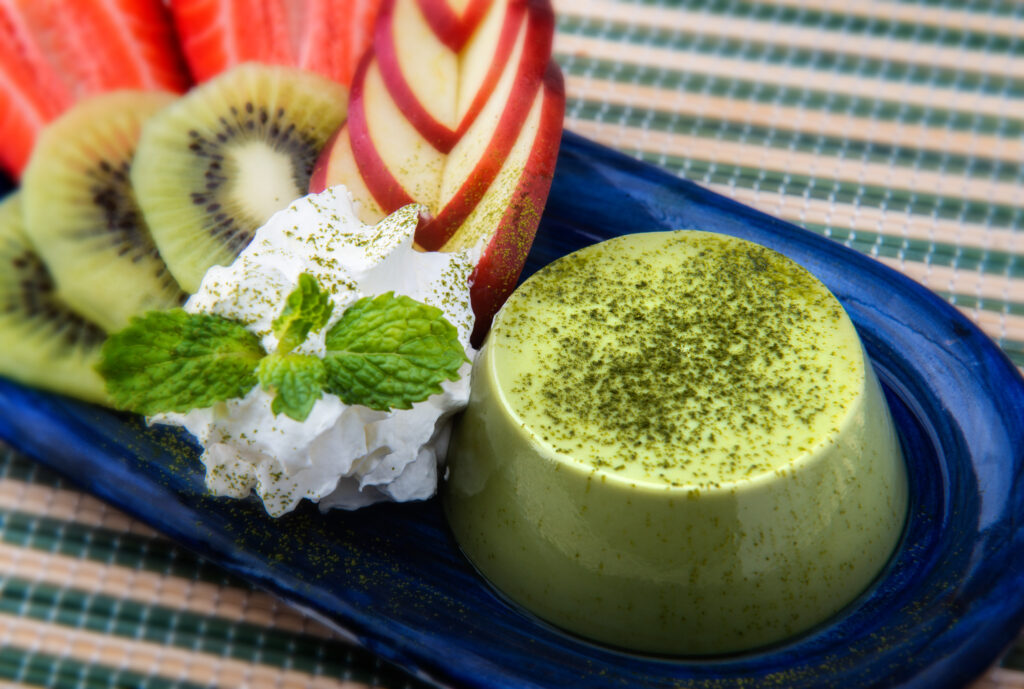
Nearly everybody has encountered matcha-flavored and -colored foods. Lattes are everywhere, of course, but matcha enlivens a huge variety of sweet treats—mochi, cookies, cupcakes, candies, you name it—as well as savory dishes.
We embrace nearly every instance of matcha in cooking. But we find it especially versatile with dessert. Indulgences like matcha brownies, cakes and milk shakes are fairly common. But matcha custard? Chances are, you’ve never tried it. Now is your chance!
To craft this beautiful dish, whisk five egg yolks with 2 tablespoons of honey, 2 tablespoons of matcha powder, 2 tablespoons of arrowroot powder and 1/2 teaspoon of cinnamon in a bowl.
Then heat 3 cups of half-and-half in a saucepan, along with 1/4 cup honey and 1/4 teaspoon salt, stirring now and again, until the cream begins to simmer. Turn off the heat.
In a slow stream, whisk hot cream into the bowl of matcha, eggs and other ingredients; make sure to whisk the entire time you are adding the cream to the matcha mixture.
Once all whisked together, pour the mixture into the saucepan and turn heat to medium. As it heats, whisk constantly until the mixture has thickened, about 1 or 2 minutes.
Remove from heat, and whisk in 1/4 cup of butter cut into small pieces and 3 teaspoons of vanilla extract.
Divide the vivid green custard into 6 small bowls or ramekins, garnish with dark chocolate shavings and anything else that appeals, such as toasted and chopped walnuts or candied orange pieces. Place in refrigerator for at least an hour. Serve chilled.
Cooking With Tea: Rose Puerh latte for digestion
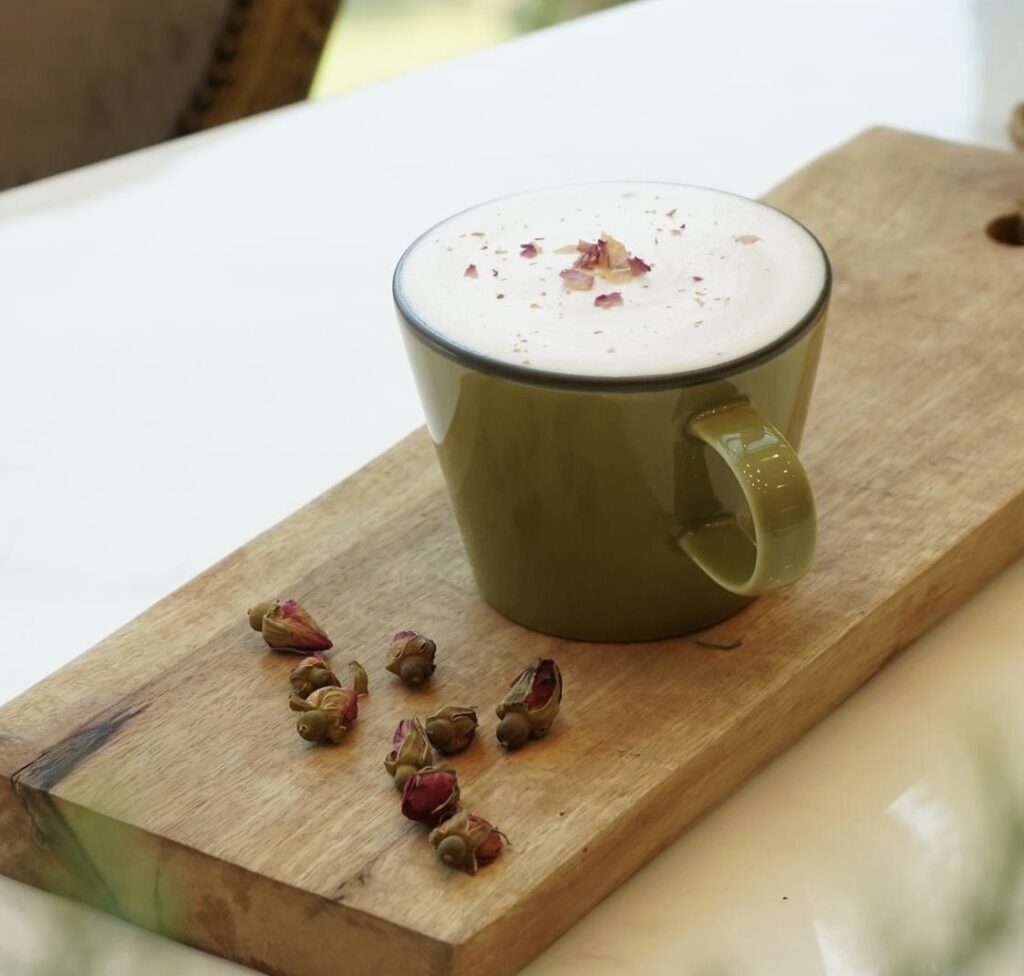
Our ingenious staff is always coming up with brilliant recipes for guests. Their DIY recipe for rose puerh latte has been a big hit, and we think it’s an outstanding way to punctuate this meal. The floral and sweet flavors complement the entire meal, and the puerh, China’s famous fermented tea, is widely used as a digestion aid. The perfect post-prandial beverage!
Making it is simple. Simply brew our Organic Rose Puerh tea, and add steamed milk and honey. Would a small piece of dark chocolate to nibble between sips dance with the latte? It would!

